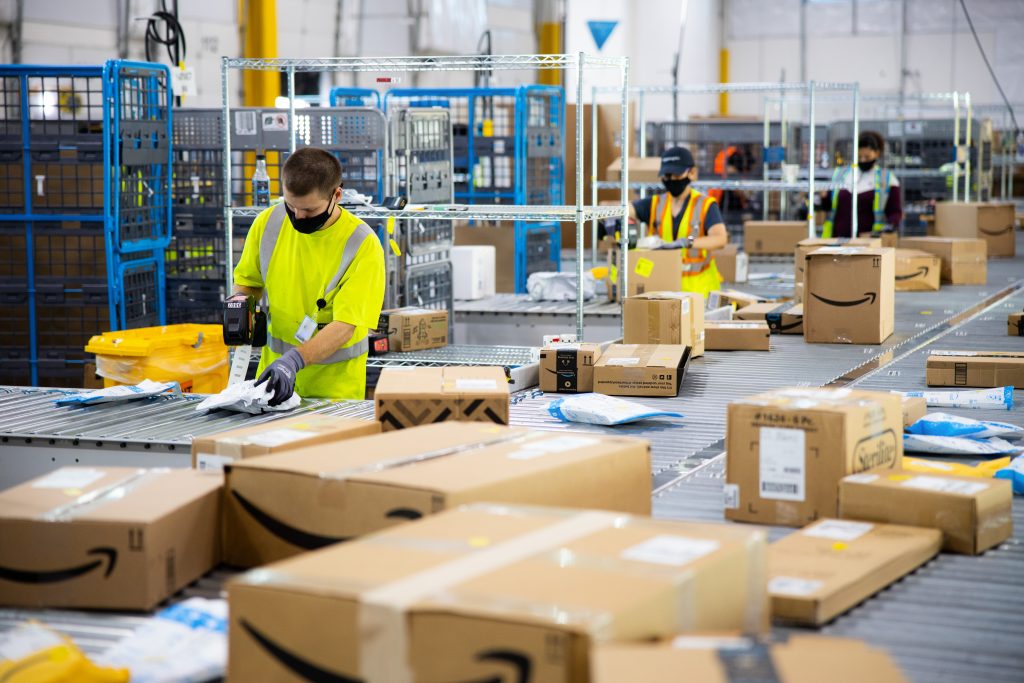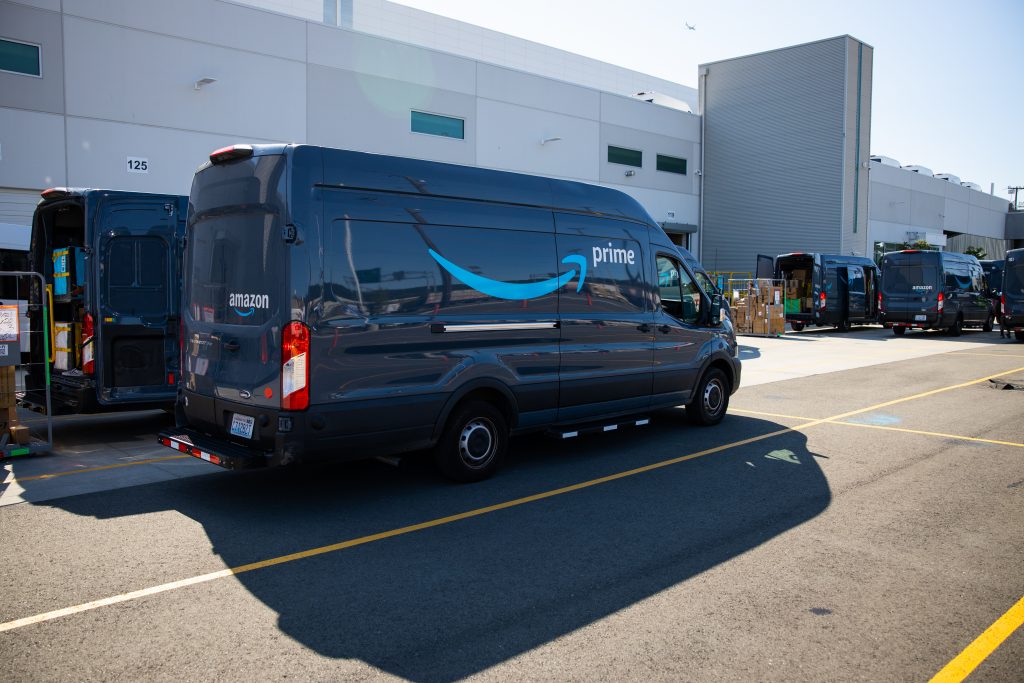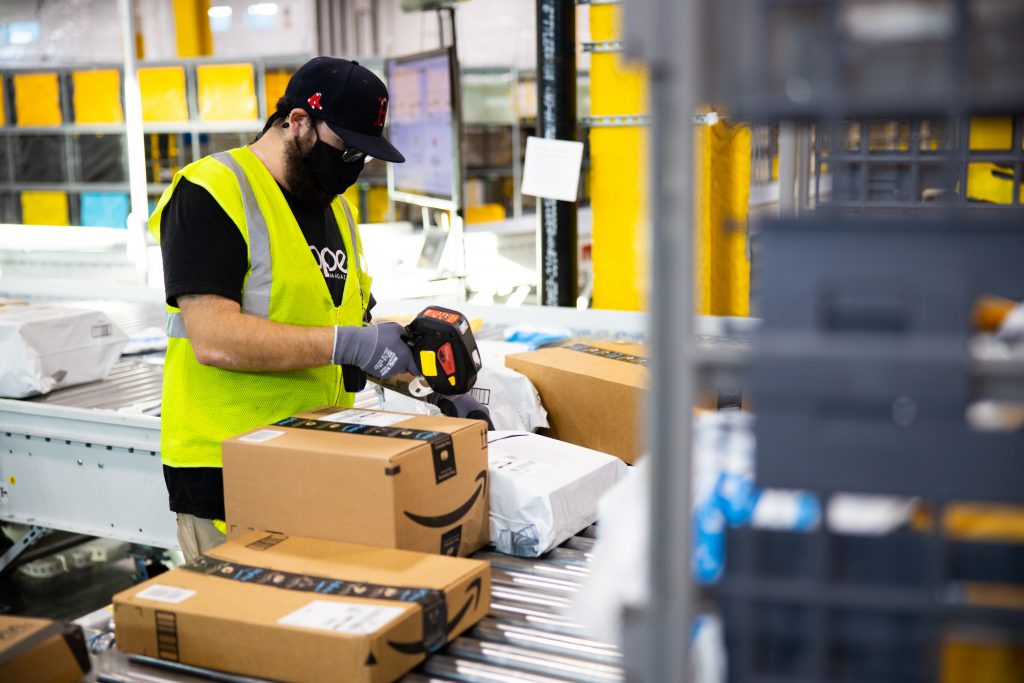So you’ve finally decided to start your own ecommerce business – that’s great!
Before you get started, one of the biggest decisions you’ll have to make is whether to sell your products through your own Shopify store, or through Amazon’s existing marketplace.
Both options have their pros and cons, but for me, the decision to go with Shopify was quite simple. In this blog post, I’ll go over the 3 main reasons why I chose to go with Shopify instead of Amazon.
Shopify is an ecommerce platform that allows businesses to create their own ecommerce website for their products. When you sign up with Shopify, you will use your own web address, and will have full ownership over the website. You choose the layout, colors, styles, text, product pricing and store policies – everything and anything as you see fit. Shopify takes care of collecting credit card and other order details, which you access from a backend portal to process and ship orders. From the customer’s perspective, they only see your brand and website name, and not Shopify.

Amazon, on the other hand, offers third-parties the ability to list and sell existing or new products. The products you list are sold on Amazon.com to Amazon customers only, so the amount of customizations and branding are limited. When you sell on Amazon, your product could be shown in front of millions of shoppers that are already on Amazon.com. In return, you must pay Amazon a hefty commission that is typically about 15% of the final sales price.
In deciding which platform to launch your business on, much of what it comes down to is whether you want to sell to your own customers, or to Amazon’s customers.
If you want to sell to your own customers, you have to generate and cultivate that customer base first, which can be a challenging and time-consuming process. On the other hand, if you simply want to sell to Amazon’s customers, then selling on Amazon as a third-party seller is the quickest way to access this customer base. The downside, however, is that you are operating within Amazon’s marketplace and ecosystem, so you have to follow their rules and commission structure.
I ended up choosing to go with Shopiy. Why?
Reason #1: Shopify is Much Better Suited for Building a Brand
One of the biggest advantages of Shopify is that it allows you to build your brand as a standalone business and website. You are able to have your own URL and website content, which gives you complete control over the aesthetics, style and customer experience.
On the other hand, when you sell your products through Amazon, it is much more difficult to build your own brand. That’s because when a customer buys something through Amazon, unless it is an already well-known brand, they will only remember having bought it on Amazon.

Think about it – when a friend asks you where you bought that awesome inflatable boat, would you respond, “a company named ‘SunPleasureInflatable’ who is a third-party Amazon seller”? Most definitely not – you’ll just say “I got it on Amazon.”
People just think of Amazon as Amazon, and don’t really pay attention to who is providing the products. The next time your friend looks for an inflatable boat, she’ll just type “inflatable boat” into the search bar and completely ignore the name of the Amazon seller that sold you that product. From Amazon’s perspective, you were just one of many replaceable third-party sellers that took on the logistics and inventory risk of supplying the product to one of their customers.
While it is possible to create your own branded products and listings on Amazon, your product will be listed among millions of other products, and you will have a harder time standing out. After all, customers will always be purchasing your products from Amazon.com with their logo and checkout process prominently displayed everywhere. From the customer’s perspective, Amazon will forever be what they associate your product with.
From the seller’s perspective, the customer belongs first and foremost to Amazon and it will always be that way.
A well-known issue for sellers is that if Amazon sees that a particular product is selling well (they will of course have full access to your sales data), they may decide to sell the same or similar product themselves at a much lower price point. Once that happens, it’s only a matter of time before you rapidly begin to lose sales.
When you build out your own website through Shopify, you are all alone. You are Shopify’s customer, so they do not impose any rules on you the way Amazon does. You get to call all of the shots. Want to offer free shipping, but only on larger orders? You can decide the exact dollar threshold to activate free shipping. Want to make your whole website solid black, with white text? If you think that works, go for it!
The downside, of course, is that you alone are responsible for promoting your online store and marketing it through whatever methods (in my case, paid advertising and organic traffic). You must build your own customer base from scratch. This is not easy, and it takes time and patience.
I would, however, argue that the difficulty in generating your own customer base is actually an appealing aspect of Shopify. That’s because when something is quick and easy, that usually means it is just that much easier for someone else to copy you and do the exact same thing. By making it harder for competitors to imitate you and directly compete against you, you’re setting your business up for sustainable and long-term profitability.
When your customers begin to recognize your brand name, and you are able to generate a constant stream of customers through online marketing, that is when your brand has intrinsic value because you have grown your own customer base that belongs to you. These customers recognize your brand and know what your company does. If your products and customer service is top-notch as they should be, your customers will love your company and want to keep coming back for more. That’s what building a brand is all about.
If you’re at all interested in growing your brand, be prepared for the up-front work needed. It’s not easy, but you’ll most definitely want to avoid Amazon and go down the Shopify route.
Reason #2: To Access Amazon’s Customer Base, You Have to Play By Amazon’s Rules
When you sell on Amazon, you are entering a partnership with Amazon, where you supply the products to Amazon’s customers. From Amazon’s perspective, they will label you a “third-party” seller, and in a literal sense, you truly are third on their list of priorities. That’s because as the “most customer-obsessed” company in the world, they care most about their customers, and of course, themselves, before they will consider the needs and satisfaction of their third-party sellers.

The result of this is that because Amazon “owns” their customers, they get to decide the rules. These rules can range from the types of shipping options you can offer their customers, when and why a customer can return products, and policies on customer reviews.
You might think that as long as you play by their rules, you’ll be fine. In reality, though, there are many situations that arise that are completely out of your control, and you may be unilaterally penalized for them nonetheless.
For example, many shady sellers on Amazon will try to out-compete your listings using unscrupulous methods. One of the shadiest, but admittedly effective tactics is for a competitor to pose as a regular customer and purchase your electronics product, then after receiving the product, intentionally set it on fire. Then, they will write a review on your product, saying “dangerous product, caught on fire during use” and uploading photos to “prove it.” You’ll then be on the hook to either rigorously defend yourself and hope that Amazon sides with you, or otherwise be stuck with a glaring 1-star review with a charred photo of your product.
Personally, I also do not like that Amazon is the sole judge on whether an item from a customer return was in sellable condition or not. I simply did not want to risk having a customer return an item in poor condition, and then having Amazon decide that it was in “good enough” condition to put back in the warehouse shelf and pass it along to the next paying customer. There are numerous examples of Amazon sellers dealing with such issues.
Yes, Amazon is the biggest online marketplace in the world, and will bring lots of customers to you. But, you’re just one of millions of “third-party” sellers in their ecosystem that is at the mercy of Amazon and Amazon’s customers.
Reason #3: Shopify Profit Margins > Amazon Profit Margins
When you sell products on Amazon, you are technically free to set whatever pricing you choose. But in reality, there is fierce price competition and downward price pressure to ensure that your products stand out and you maintain a certain level of sales and visibility in the marketplace (including the coveted top-position on product pages, commonly known as the Buy-Box). Amazon knows that when sellers compete, customers win. That’s great for them in pursuing their mission statement, but bad news for you and your profits as a seller.

In addition, in exchange for bringing all of these buyers to you, Amazon will charge you a commission or referral fee for each sale you make. The referral fee amount will depend on the category of product, but will range from anywhere between 6-30%, with the average being 15%.
Let’s look at an example: suppose you sold a $100 item that costs you $60 to manufacture and ship to your warehouse. Amazon will charge you a $15 fee, just because you sold the item through their website. Let’s assume it costs you $10 in shipping / fulfillment fees. In this scenario, all you’re left with is a profit of $15 ($100 – $60 – $15). If another seller or Amazon itself comes in and decides to undercut your price by $10, your profit is down to $5 or less.
Amazon is a nearly perfectly competitive market, and as the theory explains, over time, your profitability will only erode.
On the other hand, there is no guarantee that your Shopify store will be any more profitable, but I believe your chances for long-term profitability are much higher. Similar to Amazon, Shopify will charge you a commission fee, but the fee amount is much lower at 3% or less. The big difference, as we mentioned earlier, is that with Shopify, you have to generate your own customer base.
Let’s go back to the same example, where we sell a $100 item that costs $60 to manufacture. If we sell this on Shopify, we only get charged a $3 fee. This means that we get to keep a gross profit margin amount of $37 ($100 – $60 – $3). The million dollar question – can you acquire a new customer for less than $37?
Even if it costs us exactly $37 to acquire a new customer, I would argue that this situation is more profitable and desirable than selling through Amazon, because you are also building a customer base that may purchase again from you in the future. By selling on Shopify and building your own brand, you will see that it begins to make more sense to perform a customer lifetime value analysis, as opposed to Amazon’s per-purchase profitability analysis.
Furthermore, over time, you should also be able to reduce your customer acquisition costs as you develop your organic search reach and traffic. All the while, unless you suddenly have some serious competitors come into your space, you should be able to keep your prices the same or even increase them. Unlike Amazon, your profitability over time should increase, rather than decrease.
Can You Do Both Shopify and Amazon?
There is no technical or contractual reason that you cannot sell on both Amazon and Shopify. In fact, Amazon FBA offers multi-channel fulfillment for your Shopify order fulfillment, and Shopify also offers a way to publish your products directly onto the Amazon marketplace.
In my case, I chose to avoid Amazon for the reasons mentioned. I also wanted to avoid customer confusion, especially if there were price discrepancies between Amazon listings and my own Shopify store.
I would recommend focusing all of your time and energy on one platform. If you’re truly stuck or undecided, you can certainly try both to see which one works better for you. There’s a lot more to the ins and outs of the platform interface and process that aren’t covered in this article, and might also be a factor in your decision, and trying both platforms out would be the best way to come to your own conclusions!